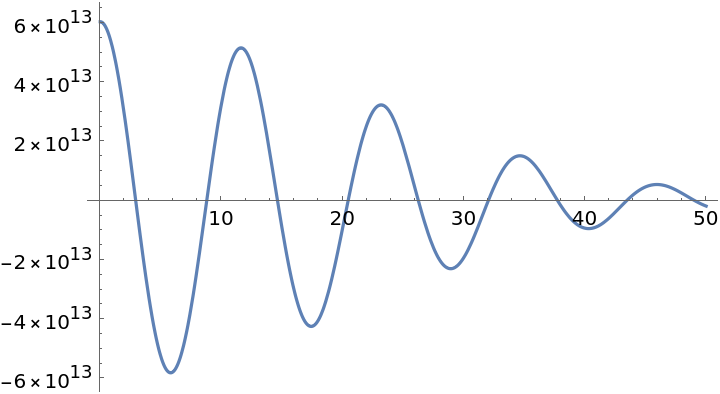Wolfram Function Repository
Instant-use add-on functions for the Wolfram Language
Function Repository Resource:
Compute the values of the function from which the de Bruijn–Newman constant is defined
ResourceFunction["DeBruijnNewmanH"][z] computes the value H0(z) where H is the function from which the de Bruijn–Newman constant Λ is defined. |
Compute the value of H0(2+5ⅈ):
| In[1]:= |
| Out[1]= |
Plot of the real part of the complex function H0(x+100ⅈ):
| In[2]:= |
| Out[2]= |  |
Calculate the value of H0(z) using both an integral definition and the relation with Riemann ζ function. As WorkingPrecision gets larger, the difference between two definitions approaches 0 and the computation could take a few minutes:
| In[3]:= | ![ResourceFunction["DeBruijnNewmanH"][17 + I Sqrt[12], Method -> "Integral", WorkingPrecision -> 5] - N[ResourceFunction["DeBruijnNewmanH"][17 + I Sqrt[12], Method -> "RiemannFunction"]]](https://www.wolframcloud.com/obj/resourcesystem/images/be1/be15451c-58c8-4eff-95c3-32fe3c15c43c/4254404fa5cadf9f.png) |
| Out[3]= |
If the Riemann hypothesis is correct, then all zeros of H0(z) are real. We check for a specific zero z around 20 that ![]() :
:
| In[4]:= |
| Out[4]= |
This work is licensed under a Creative Commons Attribution 4.0 International License